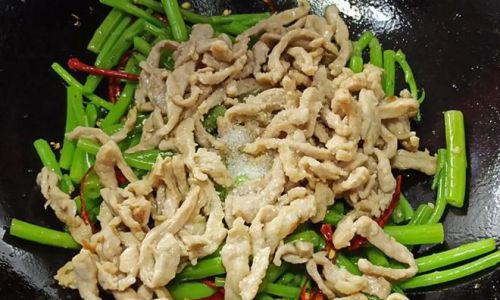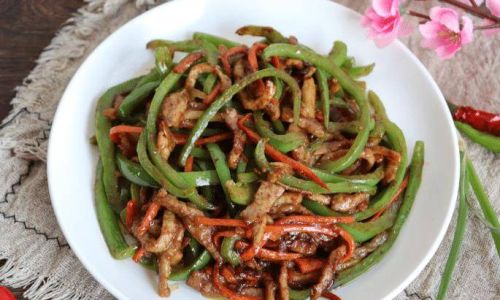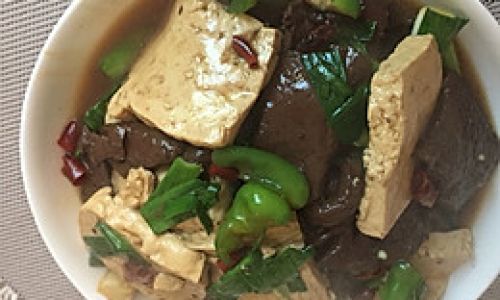Table of content
Stir-frying lean meat is a culinary art that combines speed, precision, and flavor to create a dish that is both nutritious and mouthwatering. Whether you’re preparing dinner for your family or entertaining guests, mastering the technique of stir-frying lean meat can elevate your cooking to a new level. In this comprehensive guide, we’ll explore the essential steps, tips, and tricks to ensure that your stir-fried lean meat is tender, juicy, and bursting with flavor.
Understanding Lean Meat
Before diving into the stir-frying process, it’s crucial to understand the characteristics of lean meat. Lean meat, as opposed to fatty cuts, has a lower percentage of fat, which means it can be prone to drying out if not cooked properly. Common types of lean meat include chicken breast, pork tenderloin, beef sirloin, and turkey breast. Each type has its unique texture and flavor profile, but the principles of stir-frying remain largely the same.
Preparation is Key
Choosing the Right Cut
Start by selecting a high-quality cut of lean meat. Look for meat that is firm to the touch, has a bright color, and minimal marbling. Freshness is paramount; if possible, opt for meat that has been recently sliced or butchered.
Slicing Technique
Proper slicing is essential for tender stir-fries. Always slice the meat against the grain, which means cutting perpendicular to the muscle fibers. This technique shortens the fibers, making the meat more tender and easier to chew. For chicken and pork, aim for slices that are about 1/4 inch thick. Beef can be slightly thicker, around 1/2 inch, due to its denser texture.

Marinating for Flavor
Marinating lean meat before stir-frying can add layers of flavor and help to keep the meat moist during cooking. A simple marinade can consist of soy sauce, rice vinegar, garlic, ginger, and a touch of sugar or honey to balance the flavors. Marinate for at least 30 minutes, but no longer than 2 hours, to avoid over-soaking and toughening the meat.
The Stir-Frying Process
Heating the Pan
The secret to a successful stir-fry lies in the high heat. Preheat your wok or large skillet over medium-high to high heat until it’s very hot. This ensures that the meat sears quickly, locking in juices and flavor. A well-seasoned wok is ideal, but a heavy-bottomed stainless steel or cast iron skillet will also work well.
Using the Right Oil
The type of oil you use can make a significant difference. High-smoking-point oils like peanut oil, avocado oil, or grapeseed oil are best because they can withstand the high temperatures without smoking or breaking down. Add just enough oil to coat the bottom of the pan; too much oil will steam the meat rather than sear it.
Stir-Frying the Meat
Once the pan is hot, add the meat in a single layer, avoiding overcrowding. This ensures that each piece has direct contact with the hot surface, promoting even cooking. Stir-fry for about 2-3 minutes per side, or until the meat is golden brown and cooked through. For thicker cuts like beef, you may need to adjust the cooking time accordingly.

The Importance of Timing
Timing is everything in stir-frying. Overcooking can turn lean meat into a dry, unappealing dish. Use a meat thermometer if necessary to ensure that the internal temperature reaches the safe cooking level (usually 145°F for poultry and 160°F for beef and pork). However, with practice, you’ll develop an eye for doneness, recognizing when the meat has just the right amount of color and firmness.
Adding Vegetables and Sauce
Incorporating Vegetables
Stir-fries are often a harmonious blend of meat and vegetables. Add vegetables that cook quickly, such as bell peppers, snap peas, broccoli florets, or sliced mushrooms. These should be stir-fried separately, usually in the same pan after removing the meat, to avoid overcooking. Vegetables should be crisp-tender, retaining a bit of crunch.
Crafting the Sauce
A well-balanced stir-fry sauce is crucial for flavor. A classic stir-fry sauce might include soy sauce, oyster sauce, hoisin sauce, sesame oil, and a splash of rice vinegar or chicken broth. Mix the sauce ingredients together before adding them to the pan to ensure even distribution. Pour the sauce over the cooked meat and vegetables, stirring quickly to coat everything evenly and heat through.
Finishing Touches
Garnishing for Impact
Don’t overlook the power of garnishes. A sprinkle of chopped green onions, sesame seeds, or a drizzle of chili oil can elevate your stir-fry from good to great. These finishing touches add color, texture, and an extra layer of flavor.

Serving Suggestions
Serve your stir-fried lean meat over a bed of steaming jasmine rice or brown rice for a complete meal. Noodles, such as lo mein or soba, are also excellent companions. For a healthier option, consider serving it over a bed of cauliflower rice or quinoa.
Troubleshooting Common Issues
Dry Meat
If your stir-fried meat is dry, it’s likely due to overcooking or not using enough marinade. Ensure the pan is hot before adding the meat, and stir-fry in batches if necessary to avoid overcrowding. Marinating can also help retain moisture.
Soggy Vegetables
Overcooked vegetables are a common pitfall. Stir-fry vegetables over high heat for just a few minutes until they are crisp-tender. Blanching vegetables before stir-frying can also help them retain their texture.
Sauce Separation
If your sauce separates or becomes too thin, it may be due to the addition of too much liquid or not cooking it long enough to thicken. Make sure to simmer the sauce briefly before adding it to the stir-fry to allow the flavors to meld and the sauce to thicken slightly.

Conclusion
Stir-frying lean meat is a cooking technique that, with practice, can yield delicious and satisfying results. By following the tips outlined in this guide—from selecting the right meat and slicing technique to marinating, stir-frying, and sauce preparation—you’ll be well-equipped to create stir-fried dishes that are not only nutritious but also bursting with flavor. Remember, the key to success is high heat, quick cooking, and a well-balanced sauce. With these principles in mind, you’ll be able to enjoy tender, juicy stir-fried lean meat that will delight your taste buds and impress your guests. Happy stir-frying!






0 comments